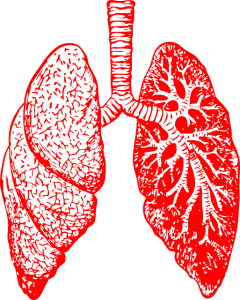Causes, Symptoms, and Types
This article does NOT provide medical advice
 Bronchitis is a respiratory condition that affects the bronchial tubes, which are responsible for carrying air to and from the lungs. When these tubes become inflamed, it leads to difficulty breathing, coughing, and mucus production. Bronchitis can be categorized into two main types: acute and chronic bronchitis. Understanding the differences between them is crucial for proper management and treatment.
Bronchitis is a respiratory condition that affects the bronchial tubes, which are responsible for carrying air to and from the lungs. When these tubes become inflamed, it leads to difficulty breathing, coughing, and mucus production. Bronchitis can be categorized into two main types: acute and chronic bronchitis. Understanding the differences between them is crucial for proper management and treatment.
What is Bronchitis?
Bronchitis occurs when the lining of the bronchial tubes becomes inflamed due to infection, irritants, or other underlying health conditions. This inflammation leads to swelling and an increase in mucus production, making it harder for air to move through the lungs. As a result, individuals with bronchitis often experience persistent coughing, wheezing, and shortness of breath.
Acute Bronchitis
Acute bronchitis is a temporary inflammation of the bronchial tubes, typically caused by viral infections such as the common cold or flu. It is a short-term condition that usually lasts for a few days to a couple of weeks.
Symptoms of Acute Bronchitis
- Persistent cough, often producing mucus
- Chest discomfort or tightness
- Sore throat
- Fatigue
- Mild fever and chills
- Shortness of breath
Causes of Acute Bronchitis
The causes are usually viral infections (most common cause), bacterial infections (less common) and exposure to irritants such as smoke, dust, or pollution
Acute bronchitis generally resolves on its own with rest, hydration, and over-the-counter medications to manage symptoms. However, if symptoms persist for more than three weeks, medical attention may be required.
Chronic Bronchitis
Chronic bronchitis is a long-term condition that is part of chronic obstructive pulmonary disease (COPD). It is characterized by persistent inflammation of the bronchial tubes, leading to prolonged coughing and mucus production for at least three months in two consecutive years.
Symptoms of Chronic Bronchitis
- Chronic cough with excessive mucus production
- Shortness of breath, especially during physical activity
- Wheezing
- Frequent respiratory infections
- Fatigue
Causes of Chronic Bronchitis
The causes include long-term exposure to tobacco smoke, which is a primary cause, also, air pollution and industrial fumes, repeated respiratory infections and sometimes, genetic factors,
Unlike acute bronchitis, chronic bronchitis is unlikely to go away on its own and requires medical intervention. Treatment options include bronchodilators, corticosteroids, oxygen therapy, and pulmonary rehabilitation.
Key Differences Between Acute and Chronic Bronchitis
Feature ||Acute Bronchitis || Chronic Bronchitis ||
Duration ||Short-term (a few days to weeks)||Long-term (months to years)
Cause ||Mostly viral infections || Long-term exposure to irritants, smoking
Treatment|| Rest, fluids, OTC medications || Medications, lifestyle changes, therapy
Recovery || Resolves on its own || Requires ongoing management
Prevention and Management
Quit smoking
This is the most effective way to prevent chronic bronchitis.
Avoid irritants
Limit exposure to pollution, chemicals, and allergens.
Practice good hygiene
Wash hands frequently to prevent infections.
Stay hydrated
Drinking fluids helps thin mucus, making it easier to clear from the airways.
When to See a Doctor
Seek medical attention if you experience:
- A persistent cough lasting more than three weeks
- Severe shortness of breath or wheezing
- High fever that doesn’t improve
- Blood in mucus
- Frequent bouts of bronchitis
Understanding bronchitis and its types can help you take appropriate steps for prevention and treatment. While acute bronchitis is usually self-limiting, chronic bronchitis requires long-term care and lifestyle adjustments to maintain respiratory health.
There are some home-based remedies you can try to ease bronchitis if your bronchitis is not sufficiently severe to seek medical attention but stay alert to the need for medical intervention.